Instruction
4 keys to developing a more consistent putting stroke
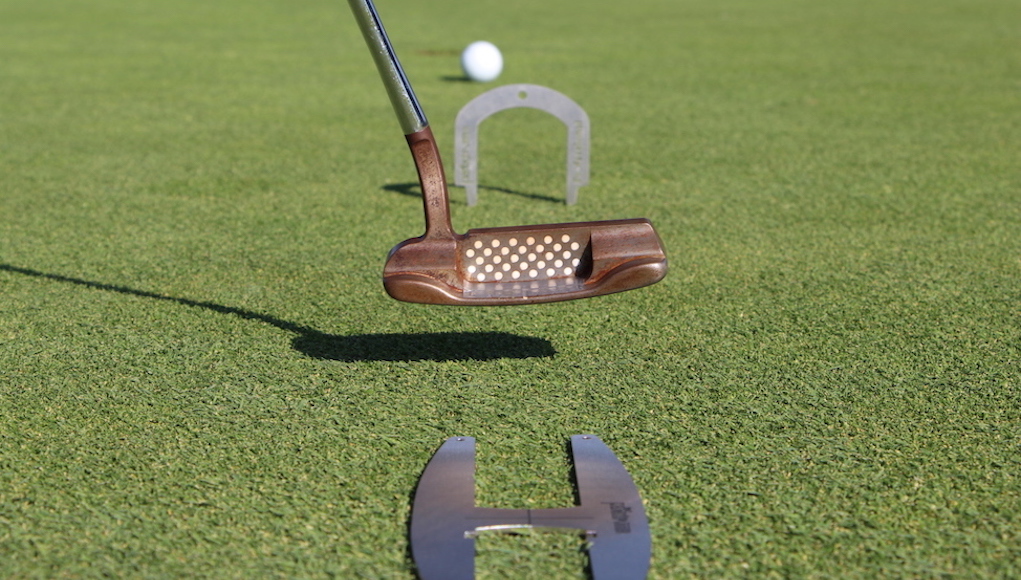
One of the most important aspects of putting is the repeatability of your stroke. That’s because reading putts perfectly isn’t very helpful unless you can consistently control your speed and direction on the greens.
The average amateur has little control over how the putter moves back and forth, thus they have little consistency in how the ball comes off the blade. The mechanical side of putting is all about getting the ball to leave the putter face exactly where you want it to.
The question is, how can golfers accomplish greater consistency on the green? Below are 4 keys to help you hone the repeatable putting stroke you’ve always wanted.
The Four Keys
- Address Alignment of the Putter Face
- Impact Alignment of the Putter Face
- The Path of the Putter Head
- The Rotation of the Putter Head
Note: Before I begin, I want to make clear that I’m only focusing on the horizontal (side-to-side) launch of the ball, which governs the starting direction of your putt based on your intended line. We’ll assume you have perfect vertical (up-and-down) launch characteristics, which will be the topic of another story.
1) Address Alignment of the Putter Face
It’s nearly impossible to be consistent on the greens if your putter face is aimed away from your target line.
In your practice sessions (on a real putting green or your carpet at home), use visual keys in practice such as putting mirrors, T-squares, chalk lines and lines on the golf ball so you can understand the difference between open, closed and square.
Don’t forget about putter designs! Different players respond differently to certain designs, and finding the right match for you could drastically improve your alignment. Take the time to read what David Edel says about how your alignment changes with different putters.
Also, I highly encourage you to use some kind of putting analysis technology at your closest fitter or instructor that has the technology. It can help you diagnose a problem that you may not even have known existed. I personally recommend SAM Puttlab, an ultrasound machine that measures more than 20 different factors of a putting stroke.
Below is an example of the feedback that SAM Puttlab offers. I have used it in my academies for more than 10 years to give my students a better understanding of their putting motion.

First, note the alignment of the blade at address. You can see that this player has a propensity to line up the face about 2.5-degrees open (to the right) of his intended target. It’s true that many players have issues aiming the putter perfectly at address, which they have to make up for during the stroke by altering their club face or club path into the ball. The more manipulation you have in your stroke, the more you have to rely on your hand/eye coordination to take over for your faulty alignments.
If you’re new to SAM, consult a professional instructor to ensure you’re reading the results properly. Diagnosing your issues is key to developing a plan to improve.
2) Impact Alignment of the Putter Face
The second factor in putting consistency is the ability to return the blade to square at impact. As we saw above, the sample player’s putter was 2.5-degrees open at address, meaning an adjustment had to be made during the stroke to avoid pushing the ball to the right.

Thankfully, this player closed the putter face during the stroke and had a path that was right down the line. Ultimately, his horizontal launch conditions were not skewed, but it’s a move that’s very difficult to repeat consistently. It’s best to start with a square face, and return the face to square at impact.
NOTE: The face angle of the putter at impact accounts for more than 80 percent of a balls starting direction.
3) The Path of the Putter Head
 Putting devices that provide feedback based on starting direction are very effective. The training aid above is from Perfect Putter, which leaves no doubt whether your putt was hit on line or not.
Putting devices that provide feedback based on starting direction are very effective. The training aid above is from Perfect Putter, which leaves no doubt whether your putt was hit on line or not.
I am not so concerned with what your stroke shape looks like (square-to-square or on an arc), but I do care where the ball starts. It’s tough to putt the ball through the gate if you have a face angle or path that isn’t on the intended target line. Remember, if you can align yourself properly at address, you’ll greatly reduce the amount of adjustments needed during the stroke.
4) The Rotation of the Putter Head
The last key is how the putter opens and closes during the stroke. The rate of closing is very important and highly correlated to the type of putter and putting stroke you employ.
 Simply put, if you use more of a square-to-square method, you should gravitate toward a face-balanced putter. The more arc you employ in your stroke, the more you should seek a putter with toe hang. Of course, this is a general rule, but one that works more often than not.
Simply put, if you use more of a square-to-square method, you should gravitate toward a face-balanced putter. The more arc you employ in your stroke, the more you should seek a putter with toe hang. Of course, this is a general rule, but one that works more often than not.
To test the putter you are using, balance the shaft on your index finger and see where the face of the putter points. If it points directly skyward you have a face-balanced putter; if not, you have a toe-hanging putter of some kind.
Getting your stroke diagnosed and finding the right putter can definitely be accomplished during the winter, so no excuses. Plus, you can practice your stroke and alignments while putting in your living room. Happy experimenting!
Instruction
The Wedge Guy: Beating the yips into submission

There may be no more painful affliction in golf than the “yips” – those uncontrollable and maddening little nervous twitches that prevent you from making a decent stroke on short putts. If you’ve never had them, consider yourself very fortunate (or possibly just very young). But I can assure you that when your most treacherous and feared golf shot is not the 195 yard approach over water with a quartering headwind…not the extra tight fairway with water left and sand right…not the soft bunker shot to a downhill pin with water on the other side…No, when your most feared shot is the remaining 2- 4-foot putt after hitting a great approach, recovery or lag putt, it makes the game almost painful.
And I’ve been fighting the yips (again) for a while now. It’s a recurring nightmare that has haunted me most of my adult life. I even had the yips when I was in my 20s, but I’ve beat them into submission off and on most of my adult life. But just recently, that nasty virus came to life once again. My lag putting has been very good, but when I get over one of those “you should make this” length putts, the entire nervous system seems to go haywire. I make great practice strokes, and then the most pitiful short-stroke or jab at the ball you can imagine. Sheesh.
But I’m a traditionalist, and do not look toward the long putter, belly putter, cross-hand, claw or other variation as the solution. My approach is to beat those damn yips into submission some other way. Here’s what I’m doing that is working pretty well, and I offer it to all of you who might have a similar affliction on the greens.
When you are over a short putt, forget the practice strokes…you want your natural eye-hand coordination to be unhindered by mechanics. Address your putt and take a good look at the hole, and back to the putter to ensure good alignment. Lighten your right hand grip on the putter and make sure that only the fingertips are in contact with the grip, to prevent you from getting to tight.
Then, take a long, long look at the hole to fill your entire mind and senses with the target. When you bring your head/eyes back to the ball, try to make a smooth, immediate move right into your backstroke — not even a second pause — and then let your hands and putter track right back together right back to where you were looking — the HOLE! Seeing the putter make contact with the ball, preferably even the forward edge of the ball – the side near the hole.
For me, this is working, but I am asking all of you to chime in with your own “home remedies” for the most aggravating and senseless of all golf maladies. It never hurts to have more to fall back on!
Instruction
Looking for a good golf instructor? Use this checklist
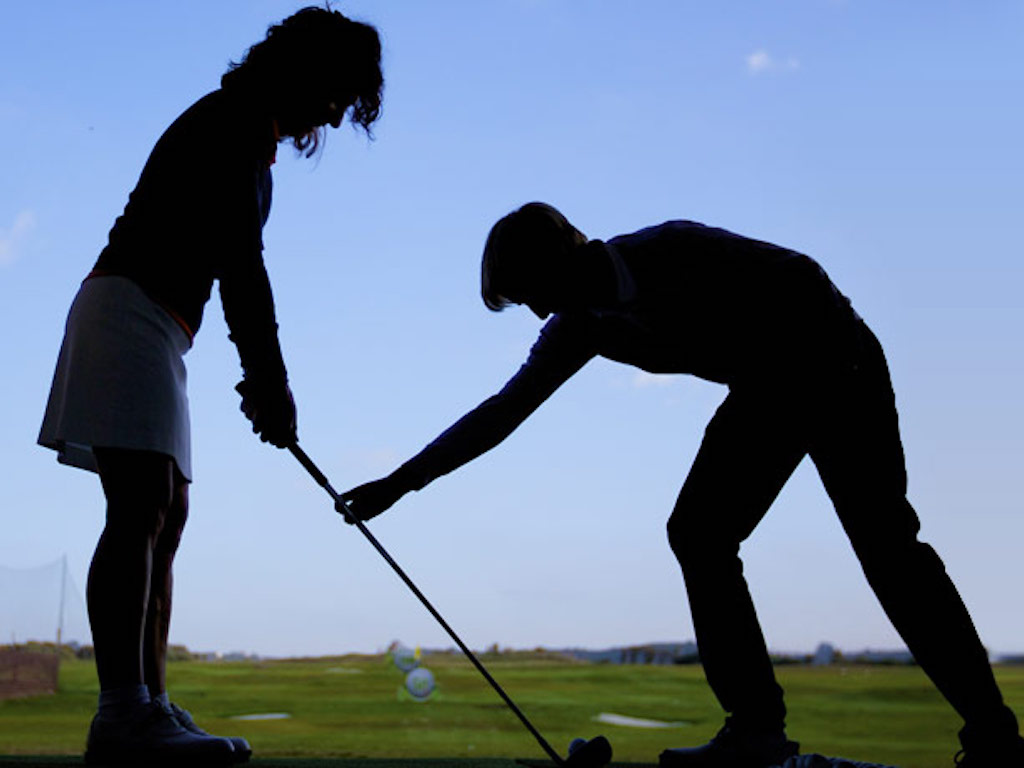
Over the last couple of decades, golf has become much more science-based. We measure swing speed, smash factor, angle of attack, strokes gained, and many other metrics that can really help golfers improve. But I often wonder if the advancement of golf’s “hard” sciences comes at the expense of the “soft” sciences.
Take, for example, golf instruction. Good golf instruction requires understanding swing mechanics and ball flight. But let’s take that as a given for PGA instructors. The other factors that make an instructor effective can be evaluated by social science, rather than launch monitors.
If you are a recreational golfer looking for a golf instructor, here are my top three points to consider.
1. Cultural mindset
What is “cultural mindset? To social scientists, it means whether a culture of genius or a culture of learning exists. In a golf instruction context, that may mean whether the teacher communicates a message that golf ability is something innate (you either have it or you don’t), or whether golf ability is something that can be learned. You want the latter!
It may sound obvious to suggest that you find a golf instructor who thinks you can improve, but my research suggests that it isn’t a given. In a large sample study of golf instructors, I found that when it came to recreational golfers, there was a wide range of belief systems. Some instructors strongly believed recreational golfers could improve through lessons. while others strongly believed they could not. And those beliefs manifested in the instructor’s feedback given to a student and the culture created for players.
2. Coping and self-modeling can beat role-modeling
Swing analysis technology is often preloaded with swings of PGA and LPGA Tour players. The swings of elite players are intended to be used for comparative purposes with golfers taking lessons. What social science tells us is that for novice and non-expert golfers, comparing swings to tour professionals can have the opposite effect of that intended. If you fit into the novice or non-expert category of golfer, you will learn more and be more motivated to change if you see yourself making a ‘better’ swing (self-modeling) or seeing your swing compared to a similar other (a coping model). Stay away from instructors who want to compare your swing with that of a tour player.
3. Learning theory basics
It is not a sexy selling point, but learning is a process, and that process is incremental – particularly for recreational adult players. Social science helps us understand this element of golf instruction. A good instructor will take learning slowly. He or she will give you just about enough information that challenges you, but is still manageable. The artful instructor will take time to decide what that one or two learning points are before jumping in to make full-scale swing changes. If the instructor moves too fast, you will probably leave the lesson with an arm’s length of swing thoughts and not really know which to focus on.
As an instructor, I develop a priority list of changes I want to make in a player’s technique. We then patiently and gradually work through that list. Beware of instructors who give you more than you can chew.
So if you are in the market for golf instruction, I encourage you to look beyond the X’s and O’s to find the right match!
Instruction
What Lottie Woad’s stunning debut win teaches every golfer
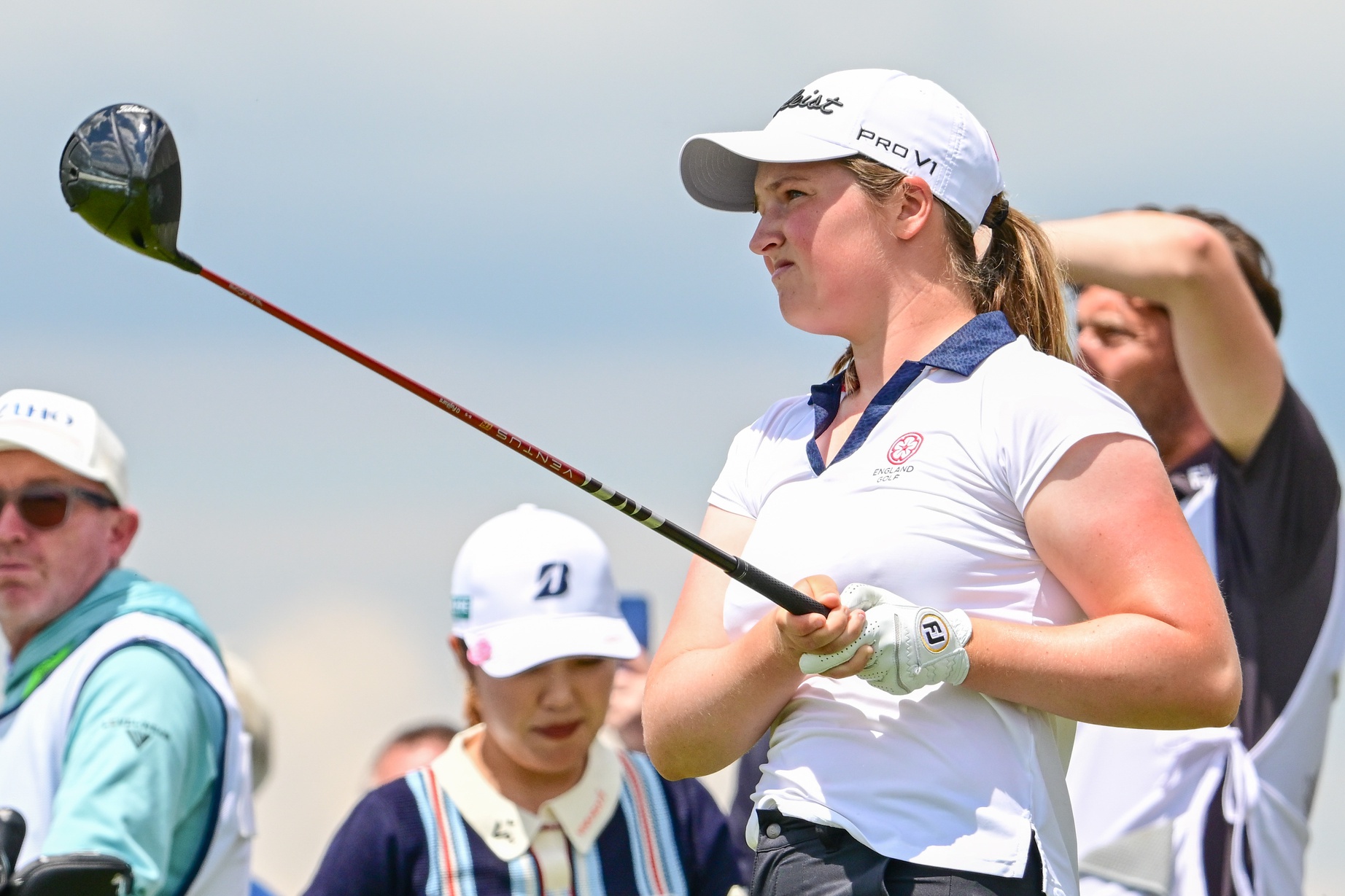
Most pros take months, even years, to win their first tournament. Lottie Woad needed exactly four days.
The 21-year-old from Surrey shot 21-under 267 at Dundonald Links to win the ISPS Handa Women’s Scottish Open by three shots — in her very first event as a professional. She’s only the third player in LPGA history to accomplish this feat, joining Rose Zhang (2023) and Beverly Hanson (1951).
But here’s what caught my attention as a coach: Woad didn’t win through miraculous putting or bombing 300-yard drives. She won through relentless precision and unshakeable composure. After watching her performance unfold, I’m convinced every golfer — from weekend warriors to scratch players — can steal pages from her playbook.
Precision Beats Power (And It’s Not Even Close)
Forget the driving contests. Woad proved that finding greens matters more than finding distance.
What Woad did:
• Hit it straight, hit it solid, give yourself chances
• Aimed for the fat parts of greens instead of chasing pins
• Let her putting do the talking after hitting safe targets
• As she said, “Everyone was chasing me today, and managed to maintain the lead and played really nicely down the stretch and hit a lot of good shots”
Why most golfers mess this up:
• They see a pin tucked behind a bunker and grab one more club to “go right at it”
• Distance becomes more important than accuracy
• They try to be heroic instead of smart
ACTION ITEM: For your next 10 rounds, aim for the center of every green regardless of pin position. Track your greens in regulation and watch your scores drop before your swing changes.
The Putter That Stayed Cool Under Fire
Woad started the final round two shots clear and immediately applied pressure with birdies at the 2nd and 3rd holes. When South Korea’s Hyo Joo Kim mounted a charge and reached 20-under with a birdie at the 14th, Woad didn’t panic.
How she responded to pressure:
• Fired back with consecutive birdies at the 13th and 14th
• Watched Kim stumble with back-to-back bogeys
• Capped it with her fifth birdie of the day at the par-5 18th
• Stayed patient when others pressed, pressed when others cracked
What amateurs do wrong:
• Get conservative when they should be aggressive
• Try to force magic when steady play would win
• Panic when someone else makes a move
ACTION ITEM: Practice your 3-6 foot putts for 15 minutes after every range session. Woad’s putting wasn’t spectacular—it was reliable. Make the putts you should make.
Course Management 101: Play Your Game, Not the Course’s Game
Woad admitted she couldn’t see many scoreboards during the final round, but it didn’t matter. She stuck to her game plan regardless of what others were doing.
Her mental approach:
• Focused on her process, not the competition
• Drew on past pressure situations (Augusta National Women’s Amateur win)
• As she said, “That was the biggest tournament I played in at the time and was kind of my big win. So definitely felt the pressure of it more there, and I felt like all those experiences helped me with this”
Her physical execution:
• 270-yard drives (nothing flashy)
• Methodical iron play
• Steady putting
• Everything effective, nothing spectacular
ACTION ITEM: Create a yardage book for your home course. Know your distances to every pin, every hazard, every landing area. Stick to your plan no matter what your playing partners are doing.
Mental Toughness Isn’t Born, It’s Built
The most impressive part of Woad’s win? She genuinely didn’t expect it: “I definitely wasn’t expecting to win my first event as a pro, but I knew I was playing well, and I was hoping to contend.”
Her winning mindset:
• Didn’t put winning pressure on herself
• Focused on playing well and contending
• Made winning a byproduct of a good process
• Built confidence through recent experiences:
- Won the Women’s Irish Open as an amateur
- Missed a playoff by one shot at the Evian Championship
- Each experience prepared her for the next
What this means for you:
• Stop trying to shoot career rounds every time you tee up
• Focus on executing your pre-shot routine
• Commit to every shot
• Stay present in the moment
ACTION ITEM: Before each round, set process goals instead of score goals. Example: “I will take three practice swings before every shot” or “I will pick a specific target for every shot.” Let your score be the result, not the focus.
The Real Lesson
Woad collected $300,000 for her first professional victory, but the real prize was proving that fundamentals still work at golf’s highest level. She didn’t reinvent the game — she simply executed the basics better than everyone else that week.
The fundamentals that won:
• Hit more fairways
• Find more greens
• Make the putts you should make
• Stay patient under pressure
That’s something every golfer can do, regardless of handicap. Lottie Woad just showed us it’s still the winning formula.
FINAL ACTION ITEM: Pick one of the four action items above and commit to it for the next month. Master one fundamental before moving to the next. That’s how champions are built.
PGA Professional Brendon Elliott is an award-winning coach and golf writer. You can check out his writing work and learn more about him by visiting BEAGOLFER.golf and OneMoreRollGolf.com. Also, check out “The Starter” on RG.org each Monday.
Editor’s note: Brendon shares his nearly 30 years of experience in the game with GolfWRX readers through his ongoing tip series. He looks forward to providing valuable insights and advice to help golfers improve their game. Stay tuned for more Tips!


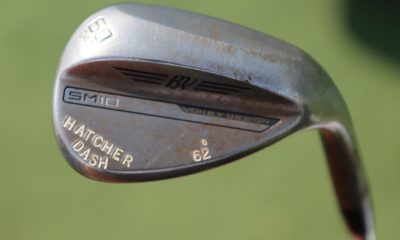





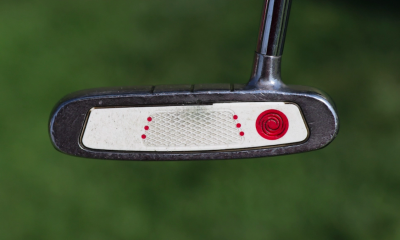

Brendan
Dec 28, 2016 at 6:49 am
Tom what is the name/brand of the alignment tools shown in the photos, looks simple but effective and would fit nicely in the golf bag
kevin
Dec 23, 2016 at 8:24 am
http://www.getthepointgolf.com Face angle and center strikes at impact !! Practice how you play!
Stick
Dec 23, 2016 at 3:51 am
Just use this thing, it’s been mentioned before in the forums
http://www.tru-rollputters.com
Chris
Dec 22, 2016 at 3:50 pm
Help me understand. The article about 4 keys to developing a consistent putting stroke. If I look at your 4 keys, they are more about modifying your stroke to fit theoretical perfection.
Address Alignment of the Putter Face – you indicate that you need to be aimed at the target to be consistent; yet you show a Puttlab report for a person that is pretty consistent in their current setup although open to the target line. Last time I checked, the ball doesn’t know anything about where my putter is pointed at setup. The ball as you stated reacts to your second key which is impact.
Impact Alignment of the Putter Face – You show a player that has nearly perfect path and a putter that pretty much ends up closed at impact. Overall this is a pretty consistent stroke that probably doesn’t need to change. Why do you think the player made an adjustment instead of having a stroke that has a lot of rotation?
The Path of the Putter Head – How often do you find a player that has or can achieve a perfect stroke? You also seem to imply that alignment somehow influences the stroke. How does alignment influence stroke? Do you completely overhaul a players full swing if they have a tendency to align left or right? Why change a persons stroke if teh path is left of right?
The Rotation of the Putter Head – This is the key to everthing you discussed in the article which is finding a putter that matches your stroke. In this diagram while the score isn’t high, the player has very consistent rotation.
The stroke you show with 80% influece of the face at impact is probably a pretty good stroke overall and the person makes a lot of putts. I doubt that the player has any manipulations due to the consistency so why would you advocate the person learn a new setup? Why not as you state in the last section find a putter that has a less rotation that will help the player start the ball online even more consistently. If the player had a stroke that was biased to the left or right; which I would be the overwhelming majority of players do, is it easier to change their stroke or to change their putter?
Stanley
Dec 22, 2016 at 8:38 pm
You can always play with that you have, but everyone is able to change putter path (or more exacty, the swing direction). An positiv angle of attack is preferred with the putter. A lefty motion will move the lowest point more towards the left foot (righthanded) and make the angle of attack more negativ.
A fitted putter would never be able to compensate for a bad movement. The rotation of the putterhead is mostly a result of a grip too much in the fingers and standing to far away from the ball.
Stanley
Dec 22, 2016 at 8:39 pm
You can always play with that you have, but everyone is able to change putter path (or more exacty, the swing direction). An positiv angle of attack is preferred with the putter. A lefty motion will move the lowest point more towards the left foot (righthanded) and make the angle of attack more negativ.
A fitted putter would never be able to compensate for a bad movement. To much rotation in the putterhead is mostly a result of a grip too much in the fingers and standing to far away from the ball.
Chris
Dec 22, 2016 at 10:05 pm
Yes, everyone is able to change putter path, but how long will it take to ingrain the change. Is it better to fit yourself to a putter or a putter to you. If you are suggesting moving closer to the ball and changing grip, you are changing how the person sees the line of the putt and making a significant overhaul in stroke mechanics.
What is your definition of “bad movement”?
The funny thing about the puttlab report that is part of this article is that they are snapshots from Tiger’s Puttlab report in 2010 and I wouldn’t consider him a bad putter or want to change his mechanics.
PinHigh
Dec 22, 2016 at 2:41 pm
Tom’s article is based on simple facts that golfers overlook. Tom thank you for the reminder, that simple. Keep doing what you do and don’t listen to the noise.
Ror
Dec 22, 2016 at 6:04 pm
Noise!!!
4right
Dec 22, 2016 at 6:07 pm
Probably one sad dude to play with… Probably acts like that kid from Duke if things don’t go his way…Hater…
alexdub
Dec 22, 2016 at 11:02 am
Showing some love for the rusted out TeI3 Santa Fe. Such a beautiful putter.